Imagine yourself in Nevada, surrounded by the tranquil desert, yearning to connect with the night sky’s boundless beauty.
But you’re confronted with the all-too-common glow of city lights, clouding your view of the cosmos.
I’ve got you covered with a guide to Nevada’s 19 top stargazing locations for 2025, where clear, dark skies await your discovery. I’ve spent many nights under Nevada’s sky, and I’m excited to share the stargazing spots that have amazed me.
Key Things To Know:
- Nevada’s dark skies are perfect for stargazing, with spots like Great Basin National Park offering clear views.
- To ensure the best experience, start your adventure in areas far from city lights.
- Equip yourself with star maps or apps to easily spot and identify celestial objects.
Recommended For You
Introduction: Nevada Stargazing
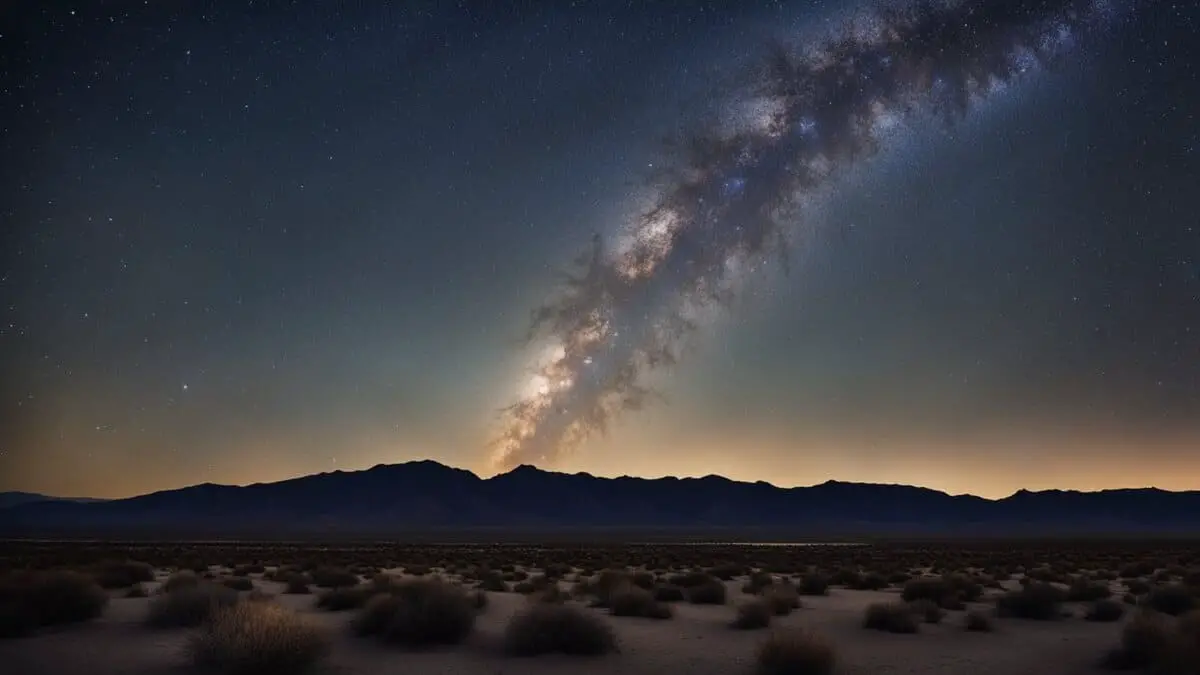
In my stargazing adventures, I’ve found Nevada to be a treasure trove, with some of the darkest skies I’ve seen in the United States.
With sprawling landscapes tucked away from bustling city lights, you’re guaranteed to find a serene spot to marvel at the night sky.
I’ve visited locations like Great Basin National Park and Massacre Rim. I can attest to their awe-inspiring celestial displays, free from light pollution.
Free Google Map of the Best Stargazing in Nevada. Each location is described in detail in this article.

Whether you’re a seasoned stargazer or just beginning your journey into astronomy, Nevada’s pristine skies offer a haven for observing constellations, planets, and even meteor showers.
Among the countless opportunities for stargazing, the state caters to all skill levels, ensuring you find the perfect spot. Lying back in the Nevada desert, I’ve felt a connection to the cosmos that is both humbling and exhilarating.
To get started on your stargazing adventure in Nevada, remember to:
- Choose a location far from city lights
- Check the weather for clear skies
- Bring a blanket or chair for ultimate comfort
- Use star maps or apps to help you identify celestial objects
- Pack binoculars or a telescope for an even closer look
With these tips, you’re ready to discover why Nevada is genuinely a stargazer’s paradise.
Imagine being enveloped by a velvety night sky, gazing at the twinkling stars above, and knowing you’ve found the perfect spot to experience the cosmos like never before.
Read my dedicated article on when to see the Milky Way in Nevada.
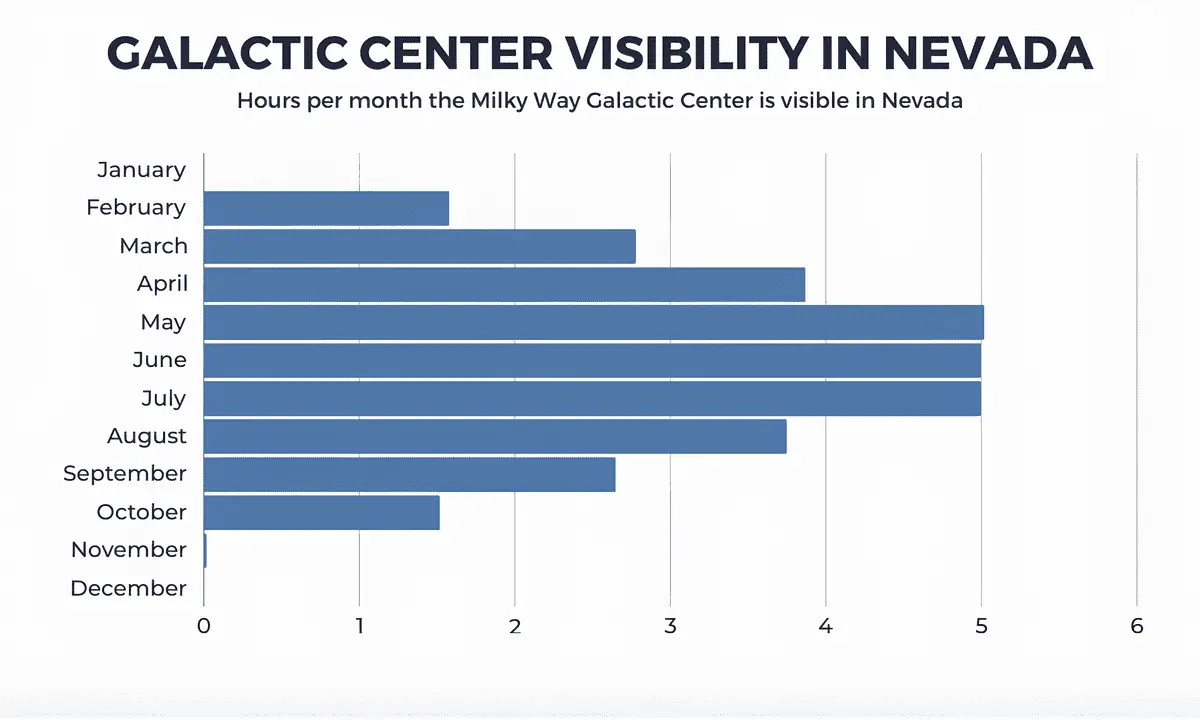
The Importance of Stargazing in Nevada
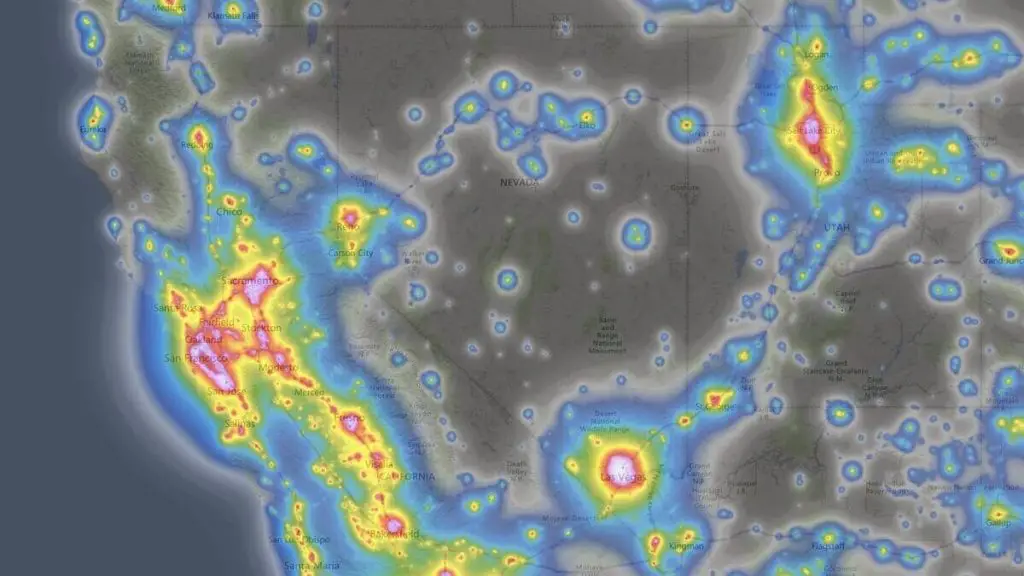
Nevada is a prime location for stargazing enthusiasts, offering unmatched dark skies and unique opportunities. When you think of Nevada, you might picture dazzling lights and bustling casinos in Las Vegas. Still, the state also boasts a treasure trove of remote, dark wilderness.
Read my dedicated article about the Nevada Dark Sky Map.
Dark Skies for Stargazing
The state is home to some of the darkest skies in the Lower 48, which means you can see more stars and celestial objects with the naked eye. The International Dark Sky Association has designated several areas in Nevada as International Dark Sky Parks, which are ideal for stargazing.
Here are two fantastic spots:
Explore Great Basin National Park
At Great Basin National Park, Nevada’s only national park, I’ve discovered some of the country’s best stargazing. Filled with diverse landscapes, from rugged mountains to ancient caves, nights spent here are filled with the vastness of the cosmos above.
When you gaze upwards, you’ll be awestruck by the millions of stars twinkling in the night sky. The Milky Way, celestial events, and even distant galaxies become visible in the pristine darkness of the park.
Discover Massacre Rim
Designated as an International Dark Sky Sanctuary, Massacre Rim offers a vast, remote wilderness with exceptionally dark skies. At Massacre Rim, the darkness is so profound that the sky feels like a natural planetarium.
As you stargaze at Massacre Rim, you might glimpse rare celestial events, such as meteor showers, the Northern Lights, or even a passing comet. Bring your camera to capture these stunning sights and make lifelong memories.
Nevada offers a unique and mesmerizing stargazing experience. Make sure to add these locations to your stargazing bucket list and enjoy the wonders of the cosmos under Nevada’s remarkable dark skies.
19 Best Stargazing in Nevada
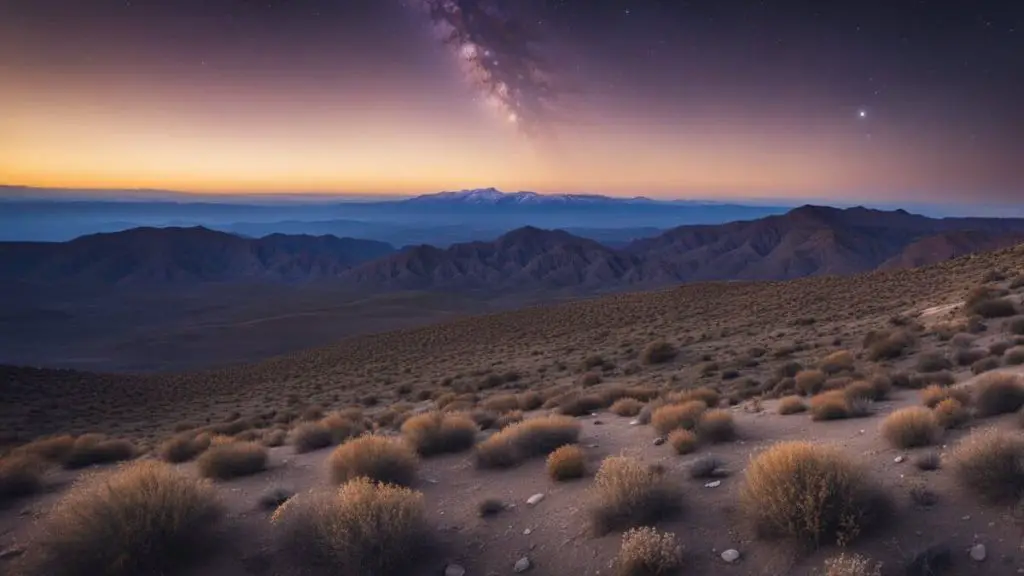
Here is my list of the best stargazing spots in Nevada. I go into detail about each location following this list.
The Bortle Class rating at these sites, ranging from 1 to 2, signifies minimal light pollution and an unspoiled night sky.
- Angel Lake (Bortle Class 2)
- Ash Meadows National Wildlife Refuge (Bortle Class 2)
- Basin and Range National Monument (Bortle Class 1-2)
- Black Rock Desert (Bortle Class 1)
- Boundary Peak Wilderness (Bortle Class 2)
- Cathedral Gorge State Park (Bortle Class 2)
- Clair Blackburn Memorial Stargazing Park, Tonopah (Bortle Class 1)
- Diamondfield Gulch (Bortle Class 1)
- Ely (Bortle Class 2)
- Fort Churchill State Historic Park (Bortle Class 2)
- Great Basin National Park (Bortle Class 1)
- High Rock Canyon (Bortle Class 1)
- Lamoille Canyon (Bortle Class 2)
- Massacre Rim Dark Sky Sanctuary (Bortle Class 1)
- Pine Forest Range (Bortle Class 2)
- Rhyolite Ghost Town (Bortle Class 2)
- Ruby Crest National Recreation Trail (Bortle Class 2)
- Sheldon National Wildlife Refuge (Bortle Class 1)
- Squaw Valley Reservoir, Granite Mountain (Bortle Class 2)
FREE STARGAZING CHECKLIST
My 5-page Stargazing Checklist will enhance your astronomical observations.
Follow this free checklist to navigate the night sky with confidence, clarity, and a sense of preparedness for a rewarding stargazing experience.

Angel Lake

Located in northeastern Nevada, Angel Lake is a secluded gem accessible via State Route 231. At an elevation of 8,378 feet, you’re above much of the Earth’s atmosphere, providing clarity that rivals even observatories. It’s under Bortle Class 2 skies, so stargazing here means you’ll witness the Milky Way with your naked eye, and meteor showers will feel up close and personal. By day, the surrounding hiking trails and fishing spots are as inviting as the celestial views by night.
Ash Meadows National Wildlife Refuge
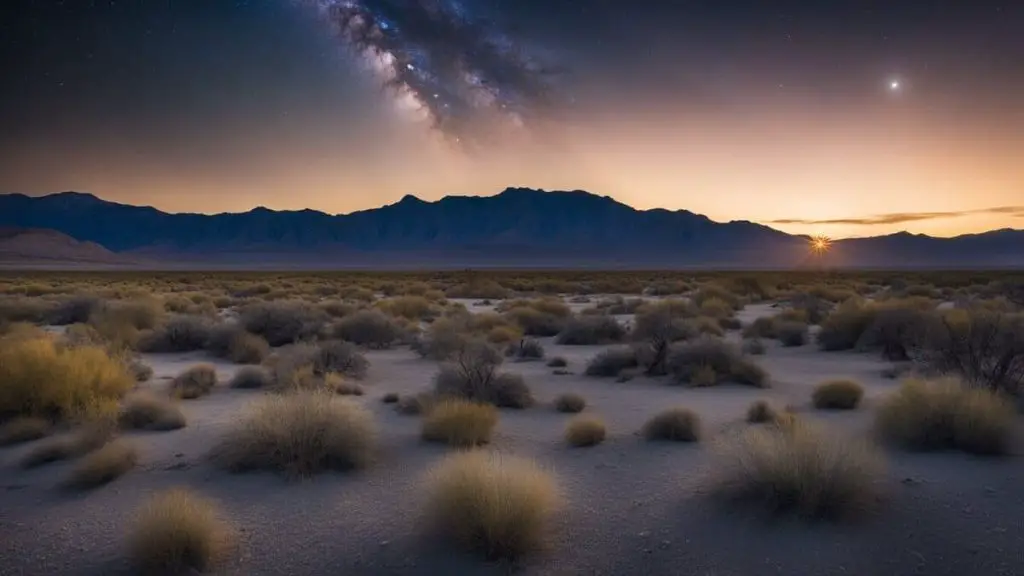
Nestled in the Amargosa Valley and accessible via State Route 373, Ash Meadows National Wildlife Refuge boasts Bortle Class 2 skies. This serene sanctuary allows you to gaze deep into the cosmos unimpeded by light pollution. Look out for their nighttime events to learn about the stars and constellations. While the refuge presents an opportunity to explore desert habitats by day, the stargazing truly shines after sundown.
Basin and Range National Monument
East of Nevada State Route 318, Basin and Range National Monument is under expansive Bortle Class 1 and 2 skies. Your day can be filled with explorations of stunning landscapes and historic ghost towns. At night, the monument transforms into a stargazing wonderland, where the blackness of space provides a dramatic backdrop for the Milky Way and other celestial wonders.
Black Rock Desert
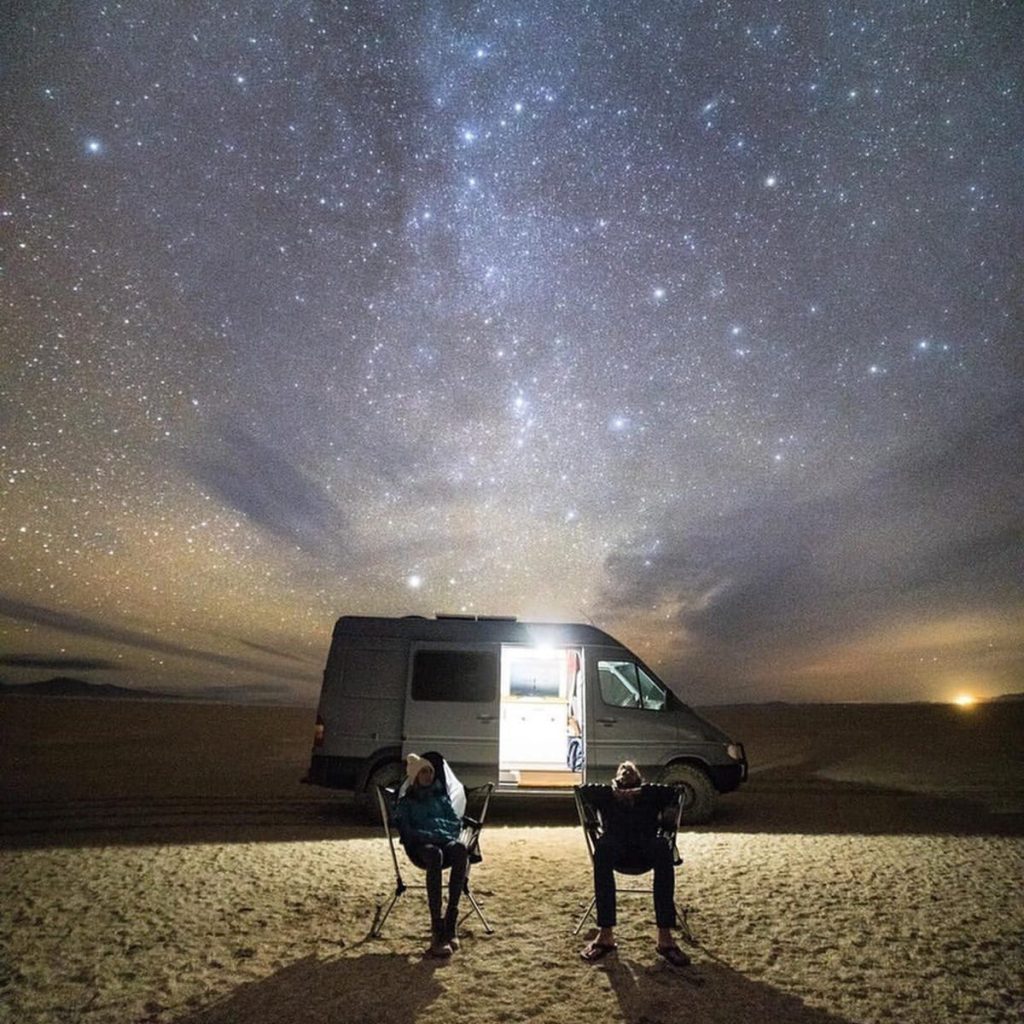
The Black Rock Desert, known for the Burning Man festival, can be reached via County Road 34. This area is under the Bortle Class 1 category, offering darkest skies. The stark landscape that hosts artistic expression by day becomes your window to the universe at night, with meteors streaking across vast, open skies.
Discover my dedicated article about Black Rock Desert Stargazing
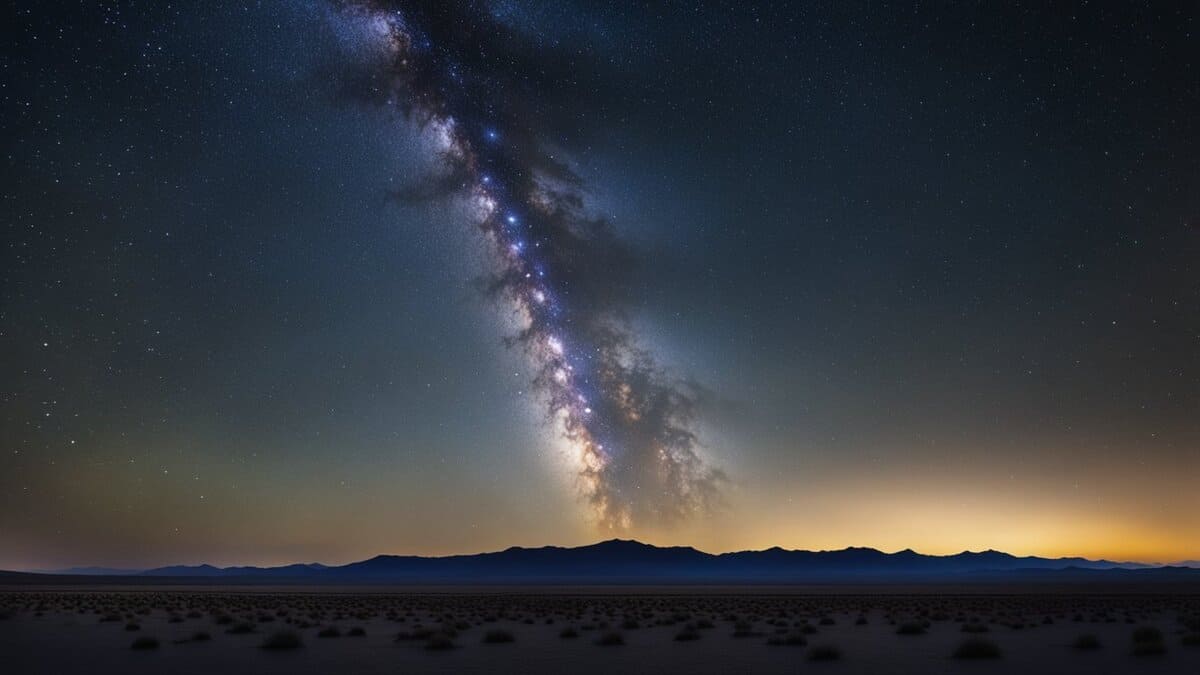
Boundary Peak Wilderness
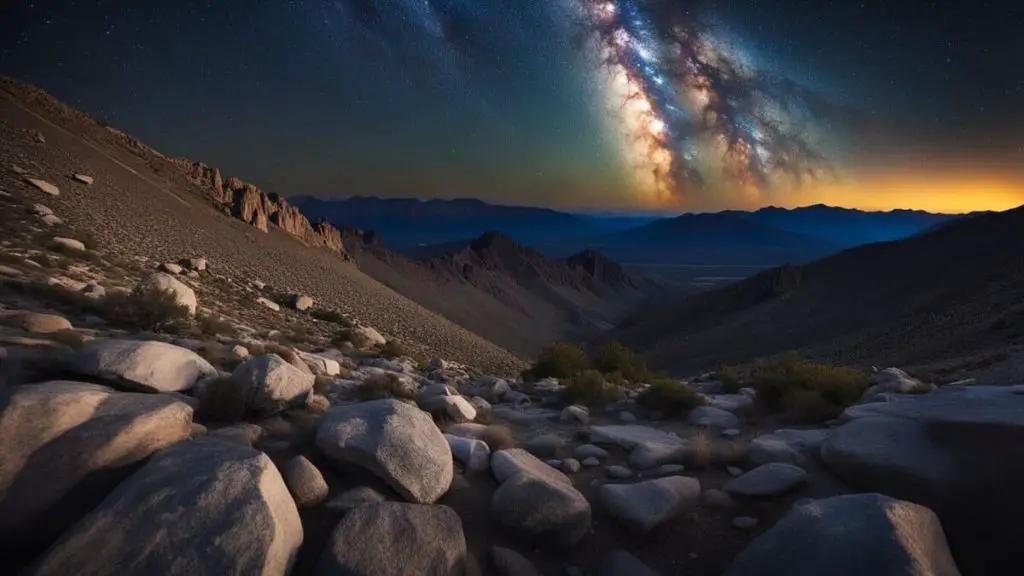
Within the Inyo National Forest, Boundary Peak Wilderness is not just Nevada’s highest point but also a stargazer’s high ground. With its Bortle Class 2 skies, you can spot details of the Milky Way’s structure. The area, found off Highway 6, offers serene hiking by day and night, a high-elevation vantage point that brings stars within reach.
Cathedral Gorge State Park
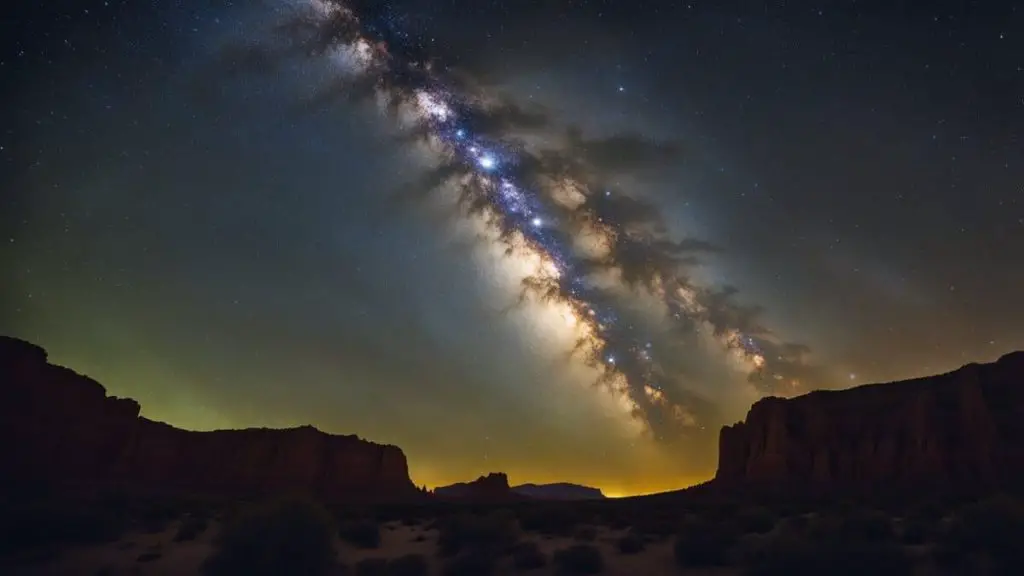
Cathedral Gorge State Park, a visual wonder by day with slot canyons, is equally spectacular at night. Situated under Bortle Class 2 skies, this park is found off U.S. Route 93, making it readily accessible for night-sky photography and meteor shower viewings.
Clair Blackburn Memorial Stargazing Park (Tonopah Stargazing Park)
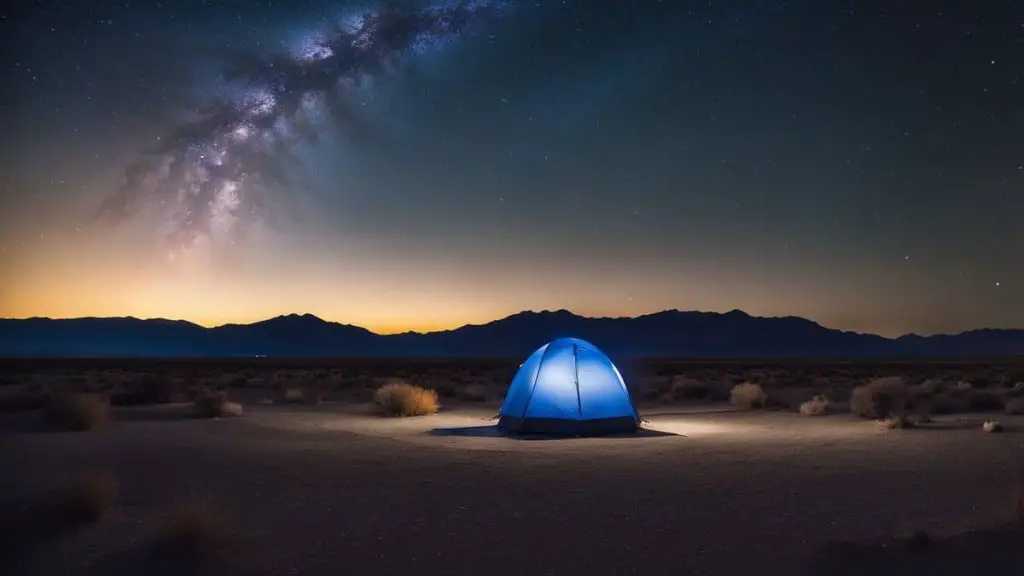
In the heart of Tonopah, a town famous for its dark skies, you’ll find the Clair Blackburn Memorial Stargazing Park. Easily reached via U.S. Route 6, the park falls under Bortle Class 1 skies. It’s equipped with an observatory and hosts stargazing events that harness the exceptionally dark skies above.
Read my dedicated article about the Tonopah Stargazing Park.
Diamondfield Gulch
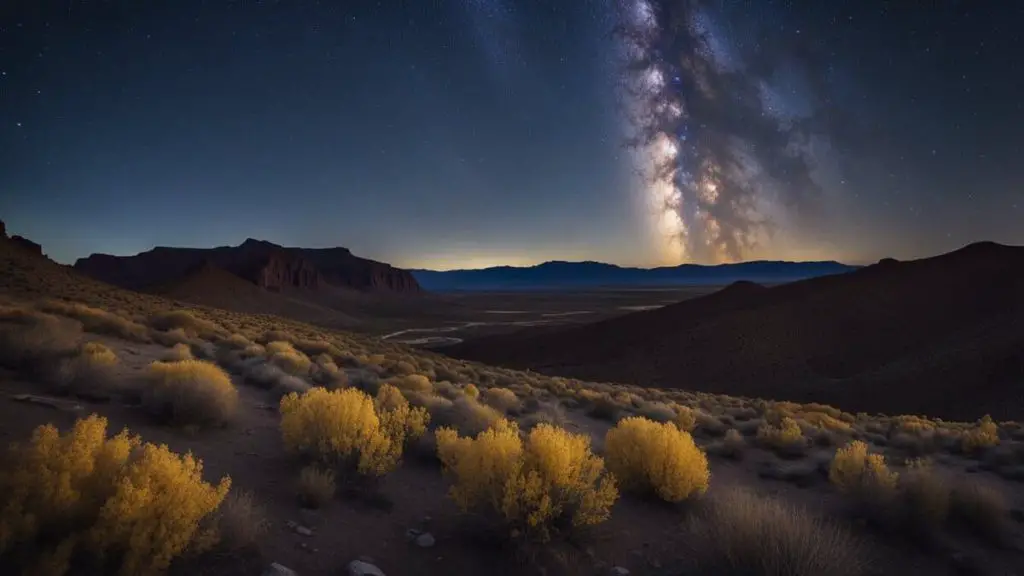
A venture to Diamondfield Gulch near Goldfield offers a dual experience of historical exploration by day and celestial by night. Located off U.S. Route 95 and under Bortle Class 1 skies, it provides some of the darkest and clearest views for stargazers.
Ely
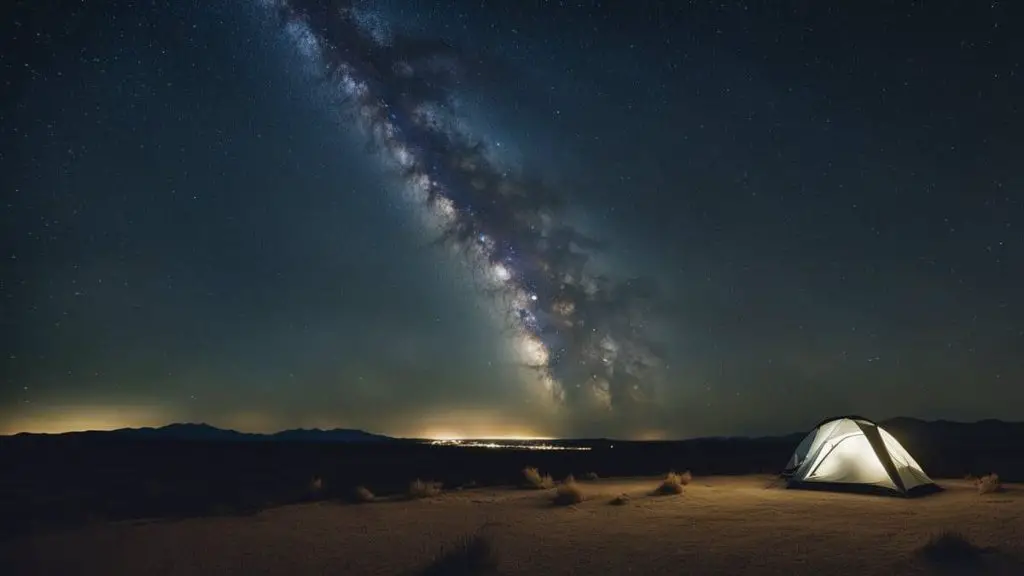
The quaint town of Ely, a short drive from the majestic dark skies along Highway 50, known as ‘The Loneliest Road in America,’ offers a unique combination of small-town charm and Bortle Class 2 stargazing locales. Venture out just a bit from the downtown area to find your perfect spot under the stars.
Fort Churchill State Historic Park
Combine a historical journey with stargazing at Fort Churchill State Historic Park, accessible via U.S. Route 95 Alternate. Under Bortle Class 2 skies, you can walk among the ruins by day and observe the heavens at night, connecting past and present under the vast Nevada sky.
Great Basin National Park
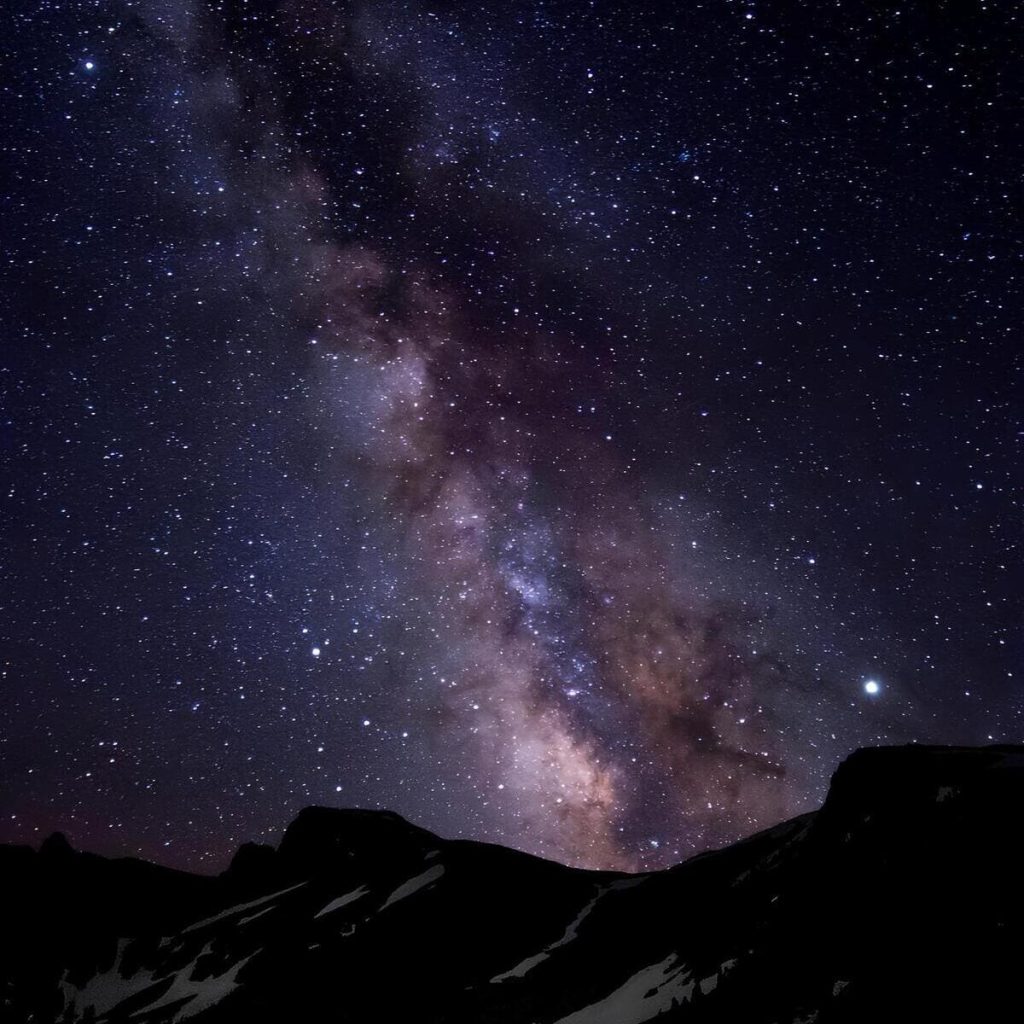
As an International Dark Sky Park, Great Basin National Park, reached via Highway 488, is a haven with Bortle Class 1 skies. It’s not just the lack of light pollution that makes it unique; the park’s elevation and clear air contribute to an unparalleled stargazing experience, where the cosmic display is vivid and enthralling.
Read my dedicated article on stargazing at Great Basin National Park.
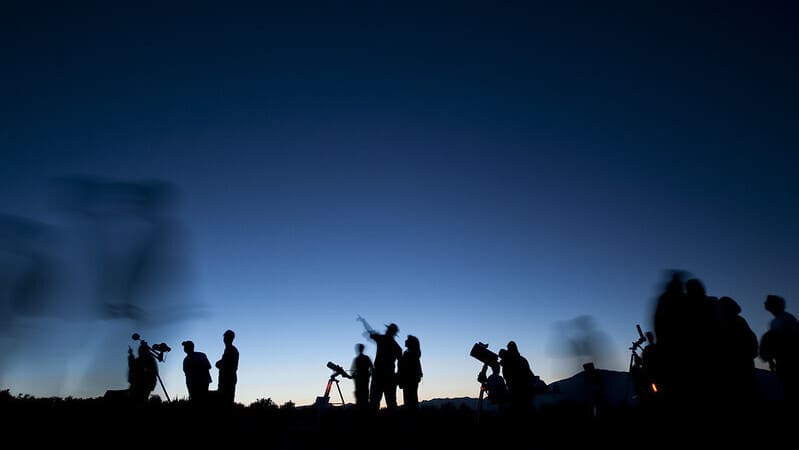
High Rock Canyon
High Rock Canyon, found north of Gerlach via County Road 34, offers stargazing under Bortle Class 1 sky, where the Milky Way casts shadows on the ground. Its untouched landscape presents a stargazing purity that’s becoming increasingly rare.
Lamoille Canyon (Ruby Mountains)
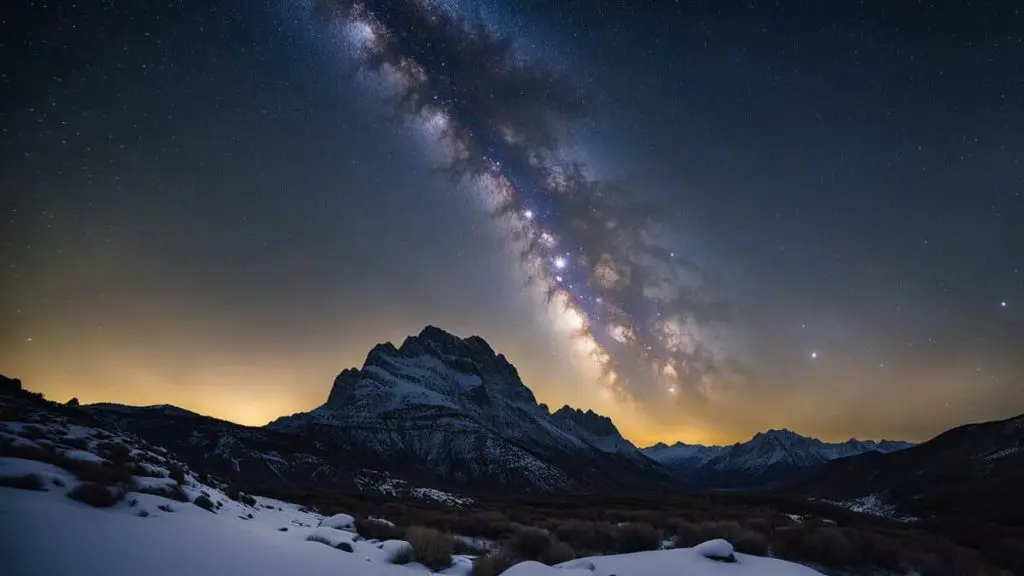
Lamoille Canyon, tucked in the Ruby Mountains and accessible via the Lamoille Canyon Scenic Byway, boasts Bortle Class 2 skies. The canyon’s high elevation acts as your balcony to the stars. Stargazers will appreciate the absence of light pollution, allowing the cosmos to unfold in vibrant detail. Here, the stars and the Milky Way feel like a canopy just out of reach.
Massacre Rim Dark Sky Sanctuary

Massacre Rim, designated as an International Dark Sky Sanctuary, can be found in a remote area of Northern Nevada. With Bortle Class 1 skies, it’s among the darkest spots on the planet. During the day, its desolate beauty is captivating. Still, at night, it offers a profound silence and depth of stars that few places can match, allowing for a profoundly moving stargazing experience.
Pine Forest Range
The Pine Forest Range, a haven for wildlife and stargazing, offers Bortle Class 1 and 2 skies. Accessible through gravel and high-clearance roads, its remoteness is its advantage, providing stargazing opportunities in pristine darkness. Here, the Milky Way stretches across the sky, and shooting stars are a common sight, making every night a potential wish-granting session.
Rhyolite Ghost Town

Near the eastern edge of Death Valley, Rhyolite Ghost Town’s remnants offer a daytime journey into Nevada’s gold rush past. As darkness falls, the Bortle Class 2 skies transform the ghost town into an astronomer’s dream, where the stars shine with an intensity that matches the rich history of the land.
Ruby Crest National Recreation Trail
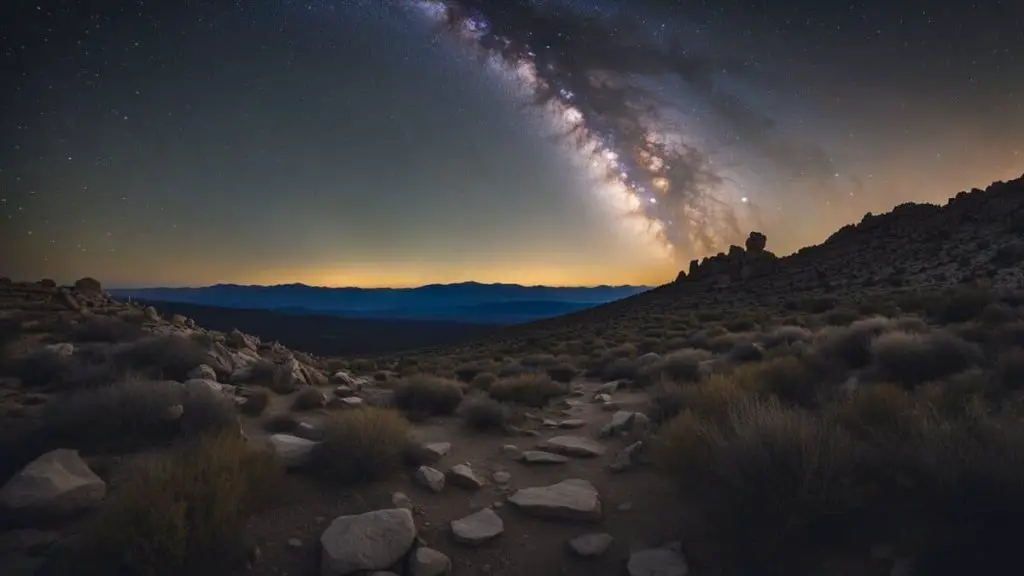
Along the Ruby Crest National Recreation Trail, the elevations provide Bortle Class 2 viewing conditions. As you hike this trail by day, plan for a night under the stars where the elevation gifts you a crystal-clear canvas for stargazing, unmarred by the light pollution of the plains below.
Sheldon National Wildlife Refuge
At Sheldon National Wildlife Refuge, reachable via State Route 140, the Bortle Class 1 skies provide a stargazing sanctuary. By day, wild horses roam, and by night, it’s the realm of shooting stars and planets, making it a destination for wildlife and star enthusiasts.
Squaw Valley Reservoir (Granite Mountain)
The Squaw Valley Reservoir is a serene daytime getaway, and by nightfall, it’s enveloped under Bortle Class 2 skies. The remote location means that as the daylight fades, the night sky comes alive with an array of stars reflecting off the still waters, offering a tranquil and stellar closing to your day.
Bonus: Red Rock Canyon National Conservation Area
Red Rock Canyon, located just miles away from Las Vegas, is a fantastic spot for stargazing due to its dark mountains and starry skies. The Southern Nevada Conservancy and the Red Rock Canyon Naturalists host star parties and night-time guided trail hikes. You can learn about constellations, star stories, and night sky conservation efforts.
Read my dedicated article on stargazing at Red Rock Canyon.
Stargazing in Specific Time of Year
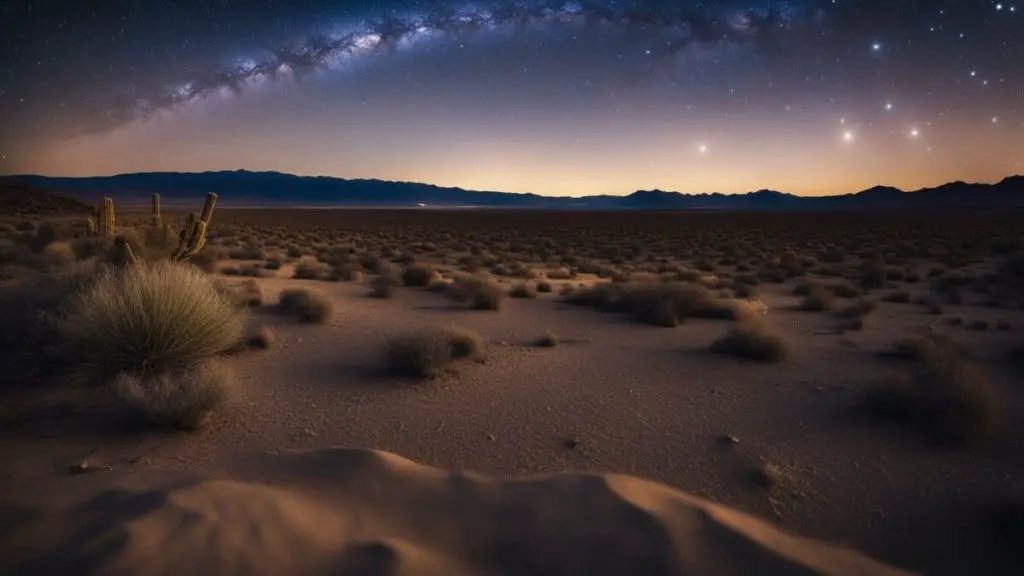
Summer and fall offer the best opportunities for stargazing in Nevada. The warm nights and low humidity create perfect conditions for clear night skies. Here’s what you can expect during each season:
Summer:
- Long days and short nights make it challenging to catch the stars, but once the darkness arrives, the sky becomes a canvas painted with stars.
- As the summer progresses, the Milky Way arcs stunningly across the sky, making it an irresistible sight for stargazers.
- There’s an annual event called Star Train, where you can hop on a train and watch the awe-inspiring night sky along the remote Nevada Northern Railway. The train ride offers dark skies away from the city lights, perfect for astronomers and curious minds alike.
Fall:
- As the days get cooler, the nights get longer, providing more time to observe Nevada’s skies.
- You’ll witness beautiful scenery as the leaves change colors, adding charm to your stargazing experience.
- An added advantage of stargazing during fall is that exploration becomes easier. The cooler weather means fewer bugs and more comfortable outdoor conditions. So, grab your telescope and let the stargazing begin!
Here are some tips for your stargazing adventure:
- Check the lunar calendar to plan your trip during a moonless night to preserve the sky’s darkness.
- Bring warm clothes in case the temperature drops during the night.
- Use red lights to help preserve your night vision.
Understanding the night sky
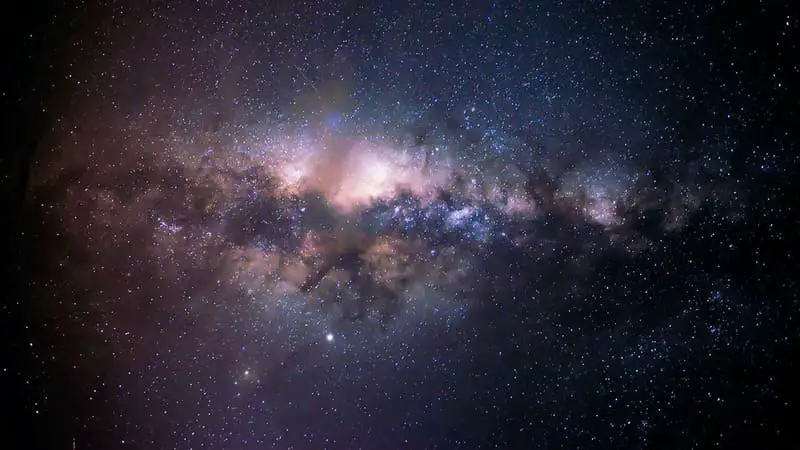
The night sky in Nevada is a stunning canvas filled with celestial wonders such as the Stars, the Milky Way, and the Moon. To fully appreciate its beauty, you must know what you’re looking at.
Here’s a brief introduction to some key elements that make up the night sky:
- Stars: These bright points of light are distant suns, often light-years away from our Solar System. You can see thousands of stars with your naked eye on a clear night in Nevada, but a telescope will reveal even more.
- Constellations: Constellations are groups of stars that make recognizable shapes or patterns. They can help you navigate the night sky and locate specific stars or celestial objects. Some well-known constellations include Orion, Ursa Major, and Cassiopeia.
- Milky Way: This massive, hazy band of light is a view of our galaxy, which contains billions of stars. The best time to see the Milky Way is during moonless nights when the sky is darkest.
- Moon: Our natural satellite has various phases, from new to full, and observing its surface with a telescope is a fascinating activity.
Ready to explore the night sky? Here are some tips that’ll help you get started:
- Choose a dark location: The darker the sky, the more stars and celestial objects you’ll be able to see. Places like Great Basin National Park are perfect for stargazing.
- Learn the constellations: Familiarizing yourself with familiar constellations will make it easier to identify other objects in the sky. You can use resources like maps and smartphone apps to get started.
- Use the right equipment: A good pair of binoculars or a telescope will enhance the details of what you’re observing.
- Visit an astronomy amphitheater: These specialized venues offer public stargazing events and knowledgeable guides to help you better understand the night sky.
Remember, stargazing is a journey of discovery, and Nevada’s incredible dark skies make it the perfect place to embark on this adventure. Enjoy exploring the cosmos!
Experience of Stargazing
Nevada offers some incredible stargazing spots, perfect for any amateur astronomer. With its dark skies and minimal light pollution, you’ll be able to see a breathtaking celestial show.
Here are some places to consider for your stargazing adventure:
- Great Basin National Park: A top choice for stargazing, this park is a designated International Dark Sky Park. During the annual Astronomy Festival, you can enjoy stargazing events, astronomy programs, and campground activities.
- Massacre Rim International Dark Sky Sanctuary: One of the darkest places in Nevada, this sanctuary offers stunning stargazing views. Pack your essentials like binoculars, a telescope, and a star map.
- Little A’Le’Inn: Located near Area 51, this quirky inn adds a touch of extraterrestrial fun to your stargazing experience. Their Park to Park in the Dark event lets you explore the sky in a unique setting.
Make your stargazing experience even better with the following tips:
- Choose a moonless night for the darkest skies.
- Bring a red flashlight to preserve your night vision.
- Bundle up in warm clothes, as the desert can get chilly at night.
Have fun exploring the stars in Nevada and immerse yourself in the wonder of the cosmos!
Tips and Precautions for Stargazing
When planning your stargazing adventure in Nevada, it’s crucial to be prepared and take necessary precautions.
Here are some helpful tips and insights to ensure a memorable night under the stars:
- Telescope or binoculars: Invest in a good-quality telescope or/binoculars for optimal viewing of celestial wonders. Even a beginner telescope can dramatically enhance your stargazing experience.
- Light Pollution: Get away from urban areas and light pollution to appreciate the beauty of Nevada’s dark skies truly. Locations like Massacre Rim and Great Basin National Park offer minimal light interference for optimal stargazing conditions.
- Timing: Plan your stargazing trip around the new moon phase since moonlight can drown out fainter celestial objects.
To ensure a hassle-free and enjoyable experience, keep the following precautions in mind:
- Watch out for wildlife: Elk and other wild animals may be in remote areas; stay alert and exercise caution to avoid encounters.
- Mind the road: Highways like US-95 and US-6 can be lonely stretches at night, so drive safely, carry a spare tire, and ensure your vehicle is in good condition.
- Cell Service: Expect limited or no cell service in remote areas. Carry a printed map, and let someone know your planned route before starting your journey.
- Dark Sky Rangers and Guide: Lastly, take advantage of Dark Sky Rangers in parks like Great Basin National Park, as they can provide expert guidance and help locate celestial objects.
By following these tips and precautions, you will have an unforgettable stargazing experience in Nevada’s mesmerizing night skies.
Connecting Stargazing with Local Culture
Nevada, known as the Silver State, boasts a rich history and unique landscapes that make it a fantastic destination for stargazing. While exploring the night sky, you can also delve into the local culture and history of the area.
Here are a few ways to combine the two:
- Visit Ghost Towns: Some of the best stargazing spots in Nevada are near old mining towns. These ghost towns offer a glimpse into the state’s past while providing stunning night sky views. For example, the Rhyolite Ghost Town near Las Vegas is an excellent option for night-sky photographers.
- Ride the Rails: The Northern Nevada Railway is a historic railroad between Ely and Ruth. This scenic train ride takes you through some breathtaking landscapes. During the evenings, you can appreciate the starry skies overhead.
- Explore Cathedral Gorge: Cathedral Gorge State Park is a dramatic landscape of spires and canyons perfect for daytime hikes and stargazing amidst a unique setting.
- Nevada’s vast public lands are ideal for stargazing. Some notable locations include:
- Great Basin National Park
- Black Rock Desert
- Massacre Rim
- Learn about the Northern Paiute: Nevada’s indigenous people, the Northern Paiute, deeply connect with the land and astronomy. Visiting places like the Pyramid Lake Paiute Tribe Museum and Visitor Center can help you learn about their culture and traditions related to the night sky.
By connecting with Nevada’s local culture, you can enhance your stargazing experience and gain a deeper appreciation for the beauty of the night sky and the history that surrounds it.
Frequently Asked Questions
What makes Nevada an excellent place for stargazing?
Nevada offers clear, dark skies ideal for stargazing, especially in locations like Great Basin National Park, far from city lights, enhancing the visibility of celestial bodies.
How can I enhance my stargazing experience in Nevada?
To enhance your stargazing in Nevada, use star maps or apps to identify stars and planets quickly. Start your adventure in remote areas to escape city light pollution for the best views.
What should I bring with me when I go stargazing in Nevada?
When you go stargazing in Nevada, bring a star map or stargazing app, a comfortable chair or blanket, and warm clothing to enjoy the night sky comfortably and for extended periods.
Final Words
As you embark on your stargazing journey through Nevada’s mesmerizing nightscape, remember that each starlit sky tells a tale as old as time. Embrace the quiet solitude under the vast cosmic canopy and let the universe reveal its secrets, one twinkling star at a time. Carry these memories like constellations in your heart, and return often, for the night sky, ever-changing, always holds new wonders to behold.
Clear skies and Happy Stargazing!
Read my other articles in my Best Stargazing in US series:
- Best stargazing in Arizona
- Best stargazing in California
- Best stargazing in Colorado
- Best stargazing in Florida
- Best Hawaii Stargazing, especially on the Hawaiian Islands of Kauai, Oahu, and Maui
- Best stargazing in Maine
- Best stargazing in New Mexico
- Best stargazing in New York
- Best stargazing in North Carolina
- Best stargazing in Ohio
- Best stargazing in Oklahoma
- Best stargazing in Oregon
- Best stargazing in Pennsylvania
- Best stargazing in Texas
- Best stargazing in Utah




